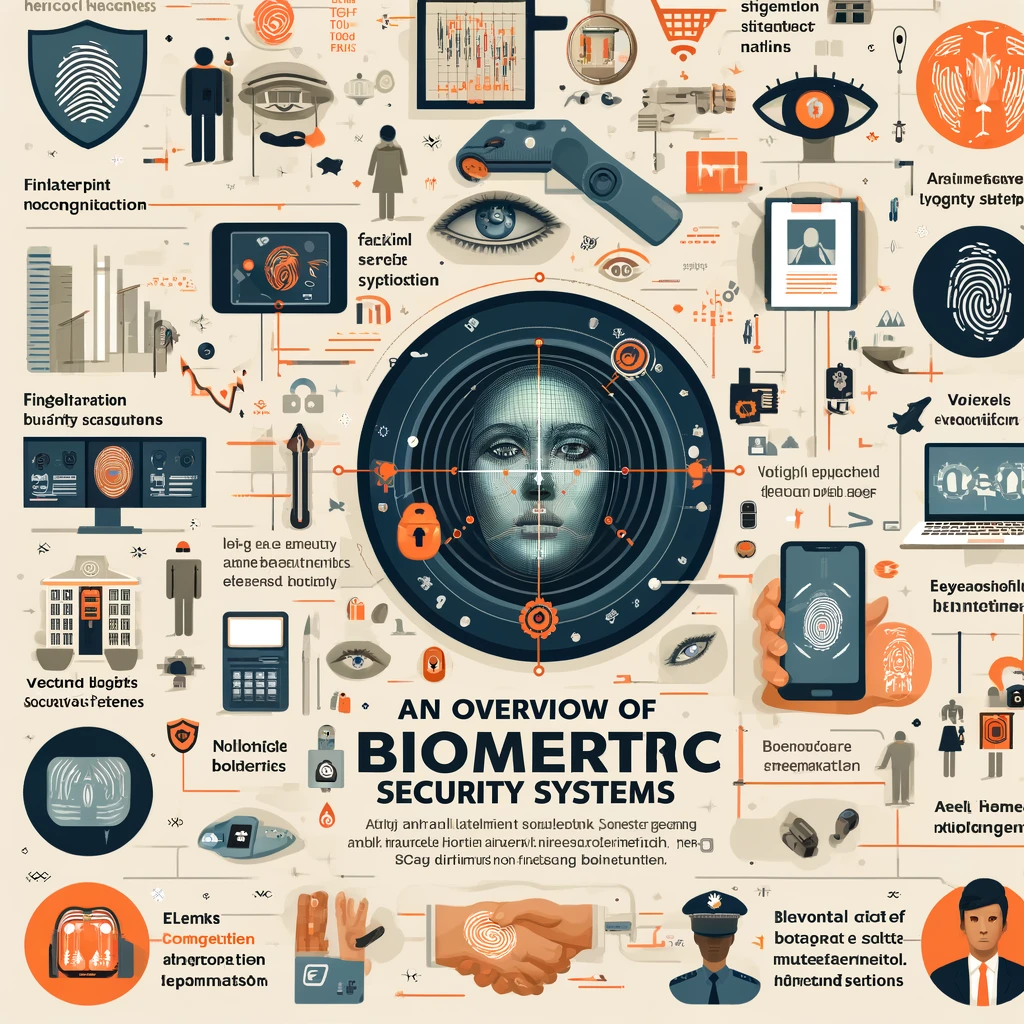Table of Contents
An Overview of Biometric Security Systems
Biometric security systems utilize unique physical or behavioral characteristics of individuals for verification and identification purposes, marking a significant leap from traditional security measures like passwords and PINs. These systems are increasingly integral to various sectors, enhancing security protocols and providing efficient, user-friendly authentication processes. This comprehensive overview delves into the types, applications, advantages, challenges, and future prospects of biometric security systems.

Types of Biometric Security Systems
Biometric security systems are broadly categorized based on the type of biometric data they process. Here are some of the most common types: Fingerprint Recognition: One of the oldest and most used biometric systems, fingerprint recognition analyzes the patterns of ridges and valleys on the surface of a finger.
Facial Recognition: This technology maps facial features from a photograph or video. It’s used in various applications, from unlocking smartphones to surveillance systems.
Iris Recognition: Iris recognition analyzes the unique patterns in the colored ring of the eye surrounding the pupil. It is known for its high level of accuracy.
Voice Recognition: This system identifies and verifies individuals based on voice patterns. It’s often used in banking systems for telephone-based customer verification.
Hand Geometry: This involves measuring and analyzing the shape of the hand and the length of the fingers. Commonly used in time and attendance tracking systems.
Behavioral Biometrics: Includes typing dynamics, gait analysis, and other behavioral traits. These systems are less intrusive and can operate passively, enhancing user convenience.
Applications of Biometric Security Systems
Biometric security systems find applications across a broad spectrum of sectors:
Law Enforcement: For identification of suspects and access control in secure facilities.
Banking and Finance: To authenticate transactions and access to safe deposit boxes.
Healthcare: For patient identification, access to medical records, and control of access to restricted areas.
Travel and Immigration: In e-passports and biometric-based border control systems.
Personal Devices: For unlocking smartphones, laptops, and smart home systems.
Advantages of Biometric Security Systems
Increased Security: Biometric data is unique to each individual, making it significantly more secure than traditional passwords or PINs.
Convenience: Biometric systems offer a quick and easy authentication process, eliminating the need to remember passwords or carry keys.
Non-transferable: Biometric traits cannot be easily transferred or shared, reducing the risk of unauthorized access.
Efficiency: They streamline various processes, from border control to employee attendance, saving time and resources.
Challenges and Concerns
Despite their advantages, biometric security systems face several challenges:
Privacy Issues: The collection and storage of biometric data raise concerns about privacy and data protection.
Security of Biometric Data: If biometric databases are compromised, individuals cannot simply change their biometric traits like they would a password.
Accessibility and Inclusivity: Variations in physical or behavioral traits among individuals can lead to accessibility issues.
False Positives and Negatives: No system is foolproof, and errors in recognition can lead to false rejections or acceptances.
Future Prospects
The future of biometric security systems lies in addressing current challenges while expanding their application. Innovations such as multimodal biometrics, which combine multiple biometric indicators, aim to enhance security and accuracy. As technology evolves, so too will the methods to safeguard biometric data, ensuring privacy and security.
Conclusion
Biometric security systems represent a critical evolution in authentication and identification practices. While they offer significant advantages in terms of security and convenience, they also present challenges that need careful consideration, especially regarding privacy and inclusivity. As these technologies continue to develop and integrate into our daily lives, balancing security with ethical considerations will be paramount. The ongoing evolution of biometric systems holds the promise of making our personal and professional environments more secure and efficient.
Go Home
